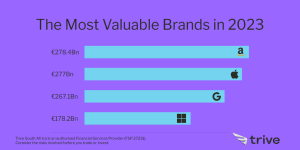
Every second the markets are open, there are opportunities to trade, whether in stocks, foreign exchange, or futures. However, a high-probability transaction only sometimes presents itself. Trading or investing is a complex process that requires meticulous attention to detail and a systematic approach to minimise losses when buying or selling financial securities.
Coming up with a checklist before trading or investing can help market participants filter out all of the market noise and randomness to execute orders with a clearer state of mind and in line with their predetermined strategy. Below, we explore a checklist that can be used to refine the entire trading process.
1. Identify Market sentiment, Economic Releases, Market News
Executing a trading plan requires knowing whether the market is bullish, bearish, or moving sideways. Trading relies heavily on market sentiment since it offers information on the general attitudes and opinions of market players, which significantly impact market trends and pricing. In that regard, trend traders frequently seek out noise and volatility, whereas range traders often find calm markets more in line with their approach. Economic data, current events, and analyst opinions, among other things, can affect market sentiment; by including sentiment analysis in your trading to-do list, you can undoubtedly make better choices. It is crucial to check the economic calendar because economic releases significantly impact asset prices. All the news releases scheduled for the month are included on an economic calendar. Economic releases include decisions made by central banks regarding interest rates, the GDP, and unemployment statistics.
2. Identifying Key Levels: Support and Resistance
In technical analysis, support and resistance are two fundamental ideas. In essence, these price levels aid traders in confirming high-probability trades by serving as the magnets from which we may spot significant market reversals. Because of supply and demand, prices fluctuate and establish support and resistance levels. Prices increase when demand outweighs supply, while it decrease as supply outpaces demand.
3.The Setup
The setup consists of the fundamental and technical requirements that must be met before considering a trade. For instance, trend-following traders require the existence of a trend, whereas range traders look for opportunities when the market is consolidating. The trading strategy should include what constitutes a tradeable trend or range. By doing this, trading will be avoided when the necessary market circumstances aren’t there. Traders could use indicators like moving averages to assess market conditions. The “setup” is ultimately the reason for trading.
4. Trade Trigger
Even though the conditions for trading are presented, a trader still needs a specific occurrence to signal that the moment is right to place a trade. The trigger may be determined by candlestick patterns, technical indicators, or economic events, depending on the strategy. A trend trader, for instance, could wait for a “Golden Cross” to confirm the likelihood of a trend reversal and the formation of a bullish market before entering a trade when a short-term moving average crosses above a long-term moving average.
5. Stop Loss
It takes more than understanding your trade trigger and having the correct entry conditions to make a profitable trade. A stop-loss order is also required to control the risk associated with a trade. A stop loss can be put in place in a variety of ways. They are frequently positioned just slightly below a recent swing low for long trades and slightly above a recent swing high for short trades.
6. Price Target (Take Profit)
Take profit is one of the most significant pre-calculated price levels employed by traders today. When the market hits a specified price, this pending order is used to close a profitable trade. It enables the trader to select a predetermined level to lock in any profits, as the name would imply. In other words, it closes the position while taking the profit. Using a take profit assists in reducing the risk of losing gains due to market fluctuations.
7. Risk-Reward
The risk/reward ratio shows how much an investor might get from an investment for every dollar they risk. The predicted rewards of an investment and the level of risk required to attain those returns are often compared using risk/reward ratios. It is frequently desirable to have a lower risk/return ratio because it indicates a lesser risk for the same possible benefit.
Summary
A trading checklist is intended to ensure you have taken into account all the essential aspects and have done all that is required to improve your chances of having a profitable trade. Reviewing market conditions, keeping track of important economic releases, establishing risk management plans, and ensuring the trade fits in with your overall investment objectives and strategy are all common items on a trading checklist.
Sources: Investopedia, Corporate Finance Institute
Disclaimer: Trive South Africa (Pty) Ltd, Registration number 2005/011130/07, and an Authorised Financial Services Provider in terms of the Financial Advisory and Intermediary Services Act 2002 (FSP No. 27231). Any analysis/data/opinion contained herein are for informational purposes only and should not be considered advice or a recommendation to invest in any security. The content herein was created using proprietary strategies based on parameters that may include price, time, economic events, liquidity, risk, and macro and cyclical analysis. Securities involve a degree of risk and are volatile instruments. Market and economic conditions are subject to sudden change, which may have a material impact on the outcome of financial instruments and may not be suitable for all investors. When trading or investing in securities or alternative products, the value of the product can increase or decrease meaning your investment can increase or decrease in value. Past performance is not an indication of future performance. Trive South Africa (Pty) Ltd, and its employees assume no liability for any loss or damage (direct, indirect, consequential, or inconsequential) that may be suffered from using or relying on the information contained herein. Please consider the risks involved before you trade or invest.




